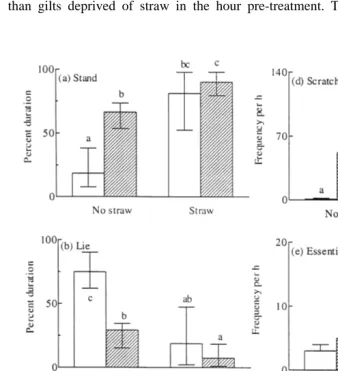Directory UMM :Data Elmu:jurnal:A:Applied Animal Behaviour Science:Vol69.Issue3.Oct2000:
Teks penuh
Gambar



Dokumen terkait
Factor analysis (based on correlation matrix of 11 behaviour and cortisol variables calculated for all 14 sows after removing the effect of breed) indicated that 82% of the
Appl. For example, broiler breeder females may not be receptive to male courtship advances, and may avoid males, thus causing frustration in otherwise normal males. The objective
The birds were provided with water on both sides for a period of 3 days 70–74 h. This period, called the equilibrium period, was used to determine the total amount and preferred side
Earlier studies have shown that thwarting of feeding behaviour in the laying hen is expressed through a specific vocalisation, the gakel-call. The first aim of this study was
yellow, white or red. Each device consisted of three 8-cm-long strands of the same colour of polypropylene twine tied together at one end with clear tape. These were suspended from
consisting of three adjoining traditional cages 90 = 45 = 90 cm. All cages were supplied with nest boxes. At 5 months of age, the siblings were removed leaving the females
Ž. On Days y7 to y1, sows showed no significant preference among the three temperatures when selecting a resting area. In summary, sows showed a pronounced increase in preference for
Nest box choice experiments were carried out outside the breeding season on adult silver and blue fox vixens with no previous permanent nest box experience. Nest boxes were varied